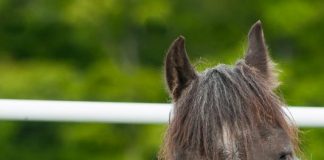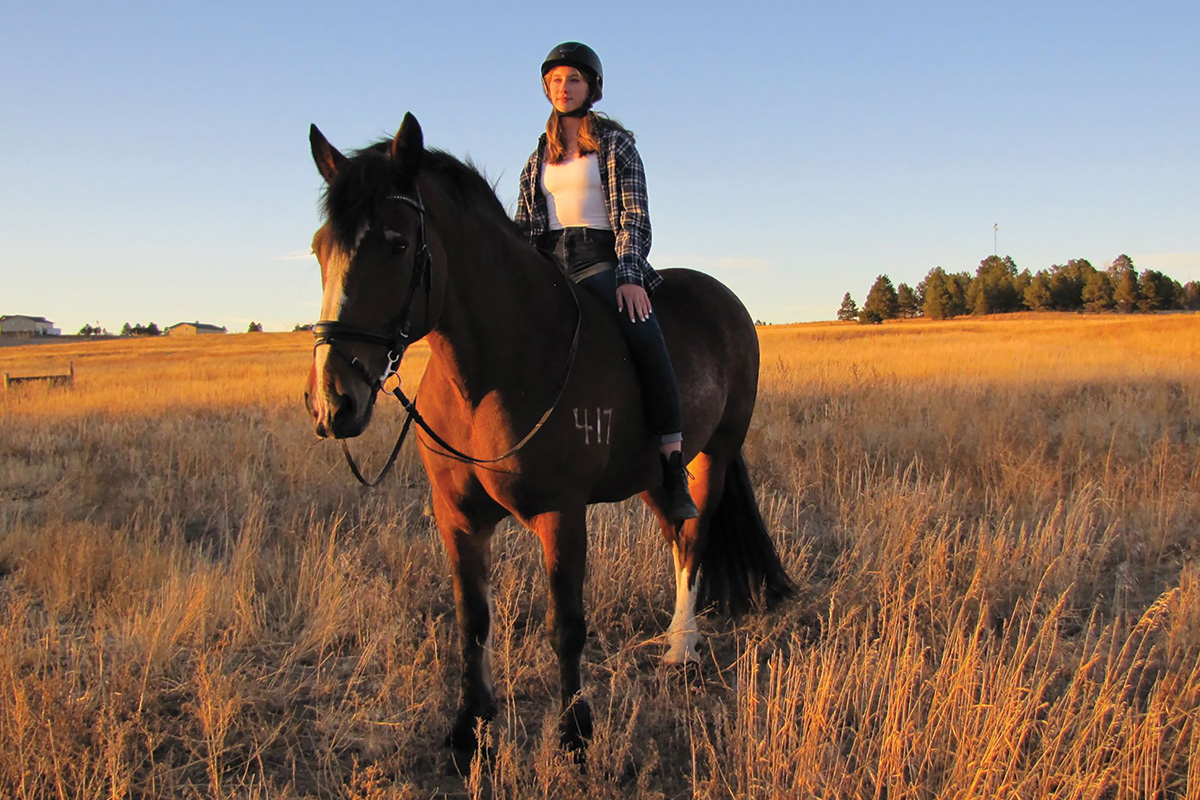
“Our bodies are our temples, and horses lead us to the altar.” ~ Beverley Kane, M.D.
Beverley Kane, M.D., Adjunct Clinical Assistant Professor of Medicine at Stanford University, shares experiences from her “Equine-imity” stress-reduction course at Stanford Medical School. In Equine-imity, Kane explores the intersection of horses and mindfulness through somatic horsemanship.
“Somatic means ‘of the body,’” explains Kane. “Somatic horsemanship is body-mind rejuvenation through physical interaction with horses.”
This interaction with (and sometimes on) horses may include yoga, taiji, qigong, meditation, dance, and equine-assisted body-oriented psychotherapies. Don’t worry if these terms are new to you—all you need to take part is an open mind.
Also read – Parelli Natural Horsemanship: The Seven Games
Qigong
Whether you are taking time to quietly visit with your horse, grooming or doing chores, getting ready to ride, or are even at a show, taking a few moments to connect with your horse and connect with yourself provides powerful life-affirming balance. Kane shows us simple qigong techniques anyone can enjoy to practice somatic horsemanship.
Similar to tai chi, qigong is a traditional Chinese practice of body movement, breath, and meditation that brings emotional balance and mental centeredness, in addition to physical benefits, including improved strength, balance, coordination, and circulation. By practicing together with our equine partners, the horse’s energy can invigorate us and can also soothe us, as well as strengthening our horse-human bond.
“In conventional horsemanship, interaction with the horse is often very mechanical. That mechanical approach may also come with a relationship based on social dominance and an almost utilitarian approach to the horse,” notes Kane. “Somatic horsemanship focuses on breath and energy, and also a philosophy of compassion based on partnership. Horses are extremely sensitive. They notice our moods, our body language, our intentions, our consistency.”
“Qi is your vital life-force energy,” adds Kane, describing how qi, together with breath, body movement, and your horse’s energy, nurture the mind-body connection.
Kane walks us through some of qigong’s “Eight Brocades” practice, adapted for horses:
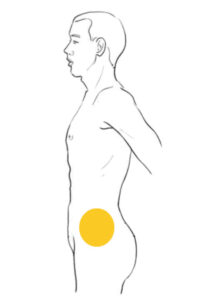
1. Center Yourself: First become grounded in your own body in the ‘bubbling springs’ energy center in your feet and the dan tien energy center in your belly—this energy center is used in tai chi practice. To do this, close your eyes, and become aware of your breath, your feelings, and your body.
2. Experience Peace: From there, come into a wu ji standing pose by stretching your spine up to the sky. Keep your shoulders down and relaxed and your arms heavy and long. Your knees stay softly bent and your feet connected to the earth through your ‘bubbling springs’ center.
3. Breathe: In this wu ji posture, breathe deep into your dan tien energy center with a soft, full belly; this means expanding your belly as you inhale deeply.
4. Harmonize: In the same stance, raise your arms up to the sky and imagine bringing the sun down and holding it in front of you. In your mind’s eye, see it as a ball of energy that you draw open as you inhale and press closed as you exhale in this pose, which harmonizes opposites. Then allow your arms to come down to your sides.
5. Join Energy Centers: Your horse’s dan tien energy center is in his barrel. Standing facing your horse’s side, place both of your hands at shoulder height on your horse’s barrel in a dan tien press. Feel your feet sink softly into the earth and breathe from your energy center in your belly. Feel your horse breathe into your hands.
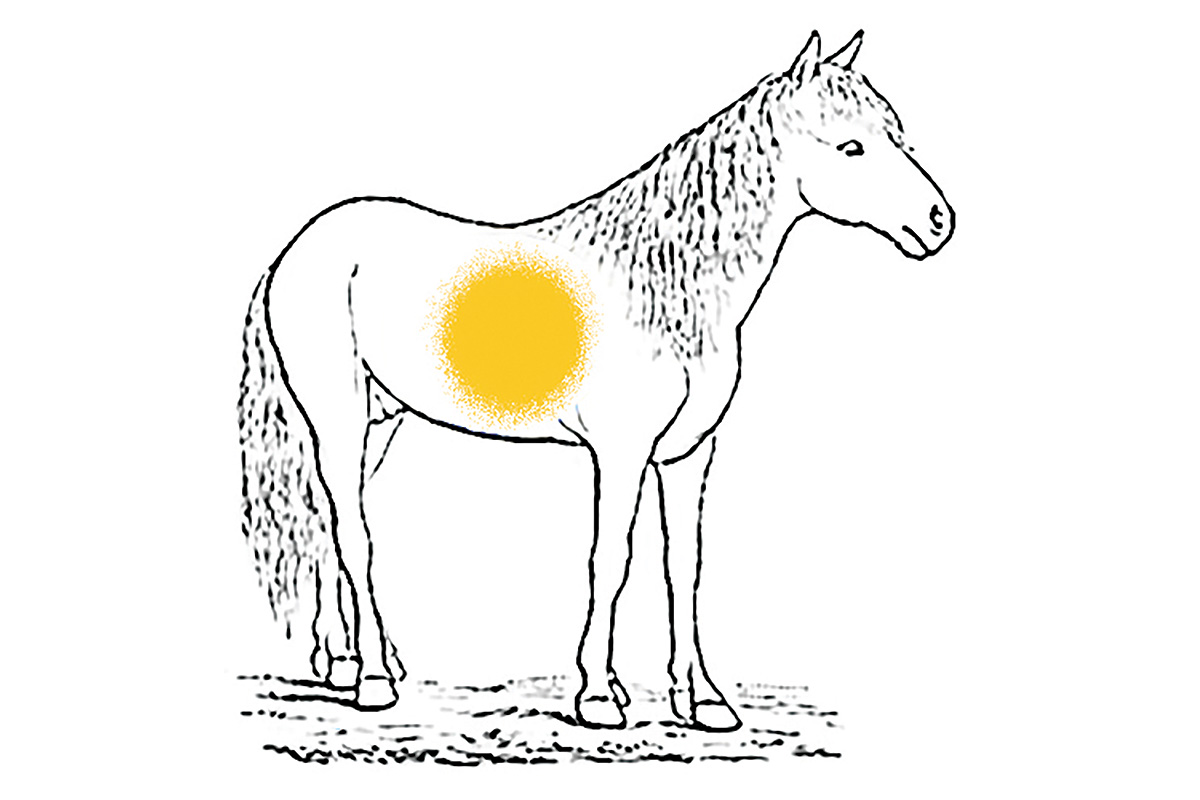
6. Come Together: From there, turn facing forward and allow your arm to drape over your horse’s back. Draw close, melding your body with your horse’s side in a dan tien hug.
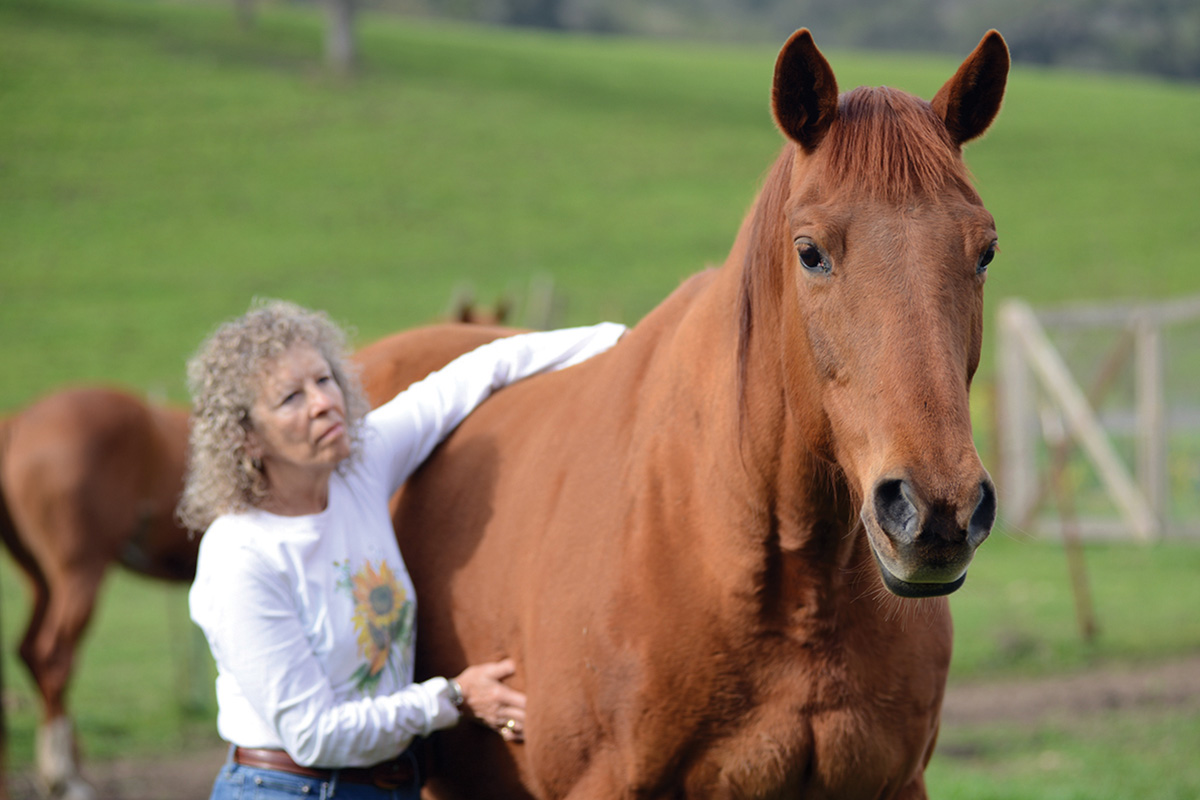
Become grounded with energy from the balls of your feet. Breathe from your belly center and feel your horse’s breath along your body. Enjoy the bond with your horse.
7. Take Somatic Horsemanship Even Further: If you’re comfortable and your horse is safe, take your breath and movement mounted.
Stress and Relaxation
“There’s not a magical formula,” remarks Kane. “There’s a lot of room for free-form interpretive motions. When you do deep breathing with synchronized muscle movement, the effect on relaxation is profound.”
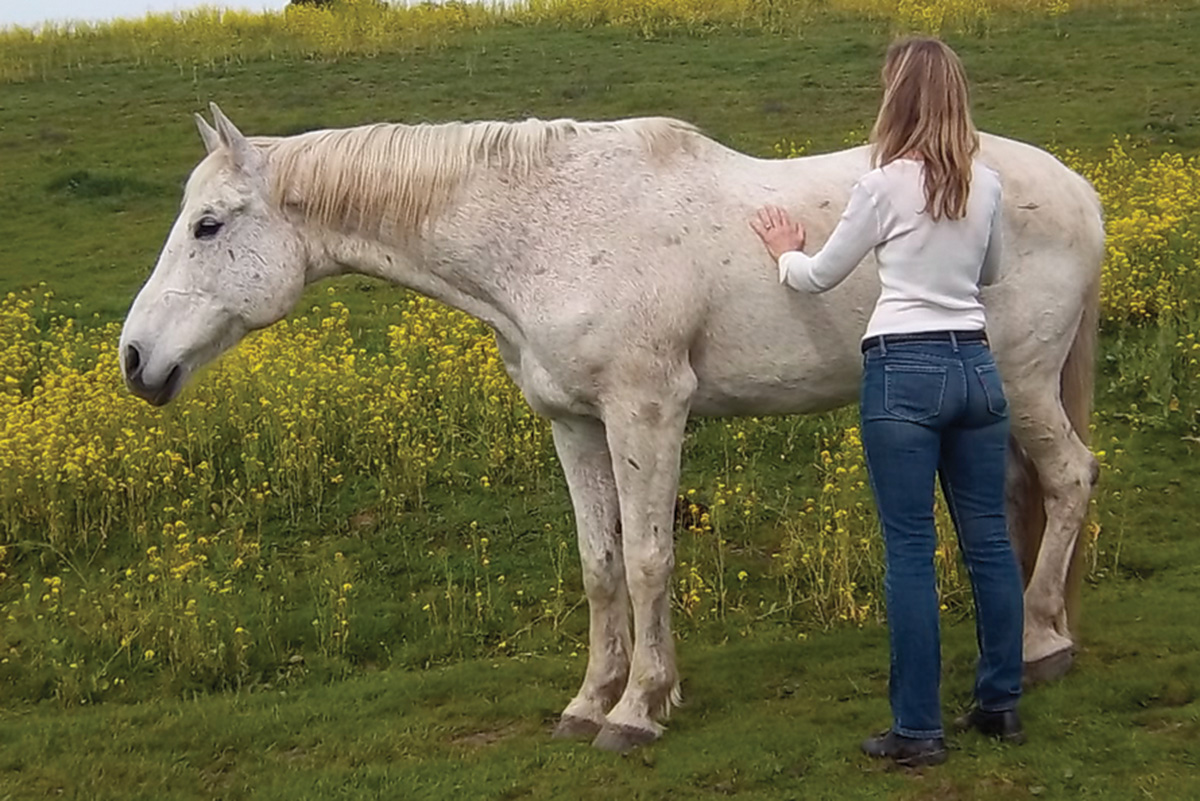
Kane describes a 2019 Harvard University and Vanderbilt University study investigating the effect of stressful tasks on the parasympathetic nervous system, in which the data suggest the combination of muscle activity and deep breathing found in moving meditation facilitates significant stress reduction.
Allow the horse to share with you his groundedness.
“There’s a phenomenon called entrainment, in which one system comes into synchronicity with another system,” explains Kane. “When you put a horse with a resting heartrate of 40 beats a minute with an anxious person with a heartbeat of 100 or more beats a minute, that person’s heartrate comes down.”
Looking forward, Kane suggests as we segue out of the COVID-19 pandemic, we look to horses’ interactions within the herd as we think about moving back into our own world of social interactions.
About the ExpertLearn more about Beverley Kane, M.D.’s work on her website. Join her Facebook group and watch her guided equestrian qigong practice. Her book, Equine-imity, expands on these concepts and readers can get a free download of the TOC and intro on the book’s site. |
This article about somatic horsemanship appeared in the January/February 2022 issue of Horse Illustrated magazine. Click here to subscribe!




